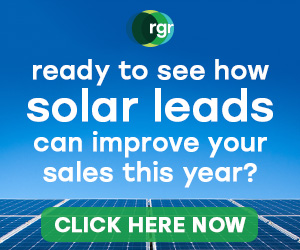
How to Address Solar Payback Questions
 With the demand for solar energy back on the rise, more homeowners are considering solar power to help reduce their energy bills. But one question commonly asked is, "When will I actually start saving money with solar panels?"
With the demand for solar energy back on the rise, more homeowners are considering solar power to help reduce their energy bills. But one question commonly asked is, "When will I actually start saving money with solar panels?"
This is a crucial factor for anyone considering the investment, and being able to clearly communicate the answer can help potential clients feel confident in their decision. Here’s how to address solar payback questions and help homeowners understand when they’ll see savings.
Understanding Solar Payback
"Solar payback" is the amount of time it takes for the savings from reduced electricity bills to cover the initial cost of installing solar panels. Once that payback period is reached, any additional savings is effectively "profit" in the form of reduced energy costs. The length of the payback period depends on various factors, and for many homeowners, it falls between 6 and 12 years, though this range can vary significantly.
Key Factors Influencing Payback Time
To provide clients with an accurate estimate of their payback period, it’s important to discuss the following five factors:
- Installation Costs: Solar installation costs can vary based on the system size, brand, and local labor costs. Smaller systems are generally less expensive but may also generate less electricity. Make sure clients understand that while higher-quality systems may cost more upfront, they often come with more efficient energy production, better warranties, and longer lifespans.
- Electricity Rates and Usage: Homes with higher electricity usage or areas with high electricity rates will typically see faster payback periods. Since solar panels reduce the need for energy from the grid, high-cost electricity regions make solar a more valuable investment. Clients can calculate their estimated savings by examining their current usage and understanding how much solar power would offset their reliance on the grid.
- Location and Sunlight Exposure: Homes located in sunny regions will generate more electricity from solar, allowing for greater savings over time. Shaded properties or those with limited sunlight exposure will produce less energy, lengthening the payback period. Be sure to assess the home's location, orientation, and surrounding obstructions to give clients a realistic idea of how much solar energy they can produce.
- Available Incentives and Tax Credits: Many states offer tax incentives, rebates, or other financial perks for going solar. Additionally, the federal solar investment tax credit (ITC) can offset a significant portion of installation costs. Incentives can dramatically reduce the upfront costs and shorten the payback period, so make sure clients are aware of any state and federal programs they qualify for.
- System Lifetime and Maintenance: Solar panels are known for their durability and can last 25 years or more with minimal maintenance. The longer the system lasts without significant maintenance costs, the greater the long-term savings. Let clients know that reliable systems with good warranties will support their financial goals over time.
Realistic Payback Expectations
When discussing solar with your prospects, it’s essential to set realistic expectations. For most homeowners, the solar payback period is achievable in around 8 years, though it could be shorter if they have access to excellent sunlight and incentives. Once the payback period is reached, homeowners typically enjoy around 15-20 years of energy cost savings, making solar an investment that yields long-term financial benefits.
Calculating and Explaining Payback
Many solar companies offer tools to estimate payback periods, taking into account system costs, incentives, and estimated energy production. Offering a clear breakdown based on a homeowner’s unique situation can help ease their concerns. Showcasing client testimonials or case studies with similar payback periods can further illustrate the financial gains from solar investment.
More Informed Solar Leads = Increased Sales
Helping clients understand when they’ll save money with solar panels comes down to educating them on the factors affecting payback and offering realistic estimates. By transparently discussing these considerations, you can guide potential clients toward seeing solar as not only an eco-friendly choice but also a financially savvy one.
In fact, the more informed your solar leads are, the easier and quicker it will be to convert them into sales. When you work with purchased solar leads from RGR Marketing, that is exactly the type of leads you receive. We specialize in providing solar installers with high-quality leads that have shown recent increased interest in solar. And with more than 20 years of experience working with solar installers, our results are reliable.
Partner with RGR Marketing today and get access to leads that are verified and scrubbed, so your sales team can work more efficiently. Contact us today and discover the difference of working with better qualified leads!
Start making more
money today!
Search Categories
Tags
Tag Cloud
Latest from Twitter
Contact Us
Call us at 310-540-8900 or fill out the form below and we’ll tell you how you can get high quality leads for free*.
* Get up to 10% free leads on your first order!